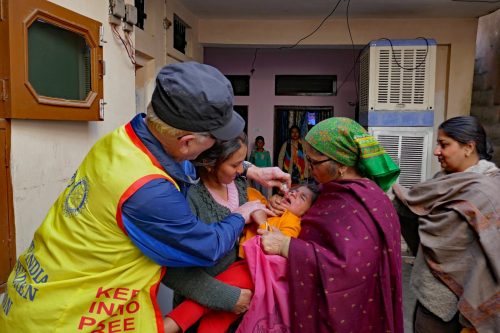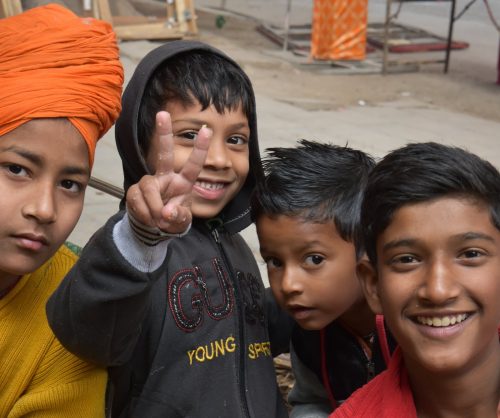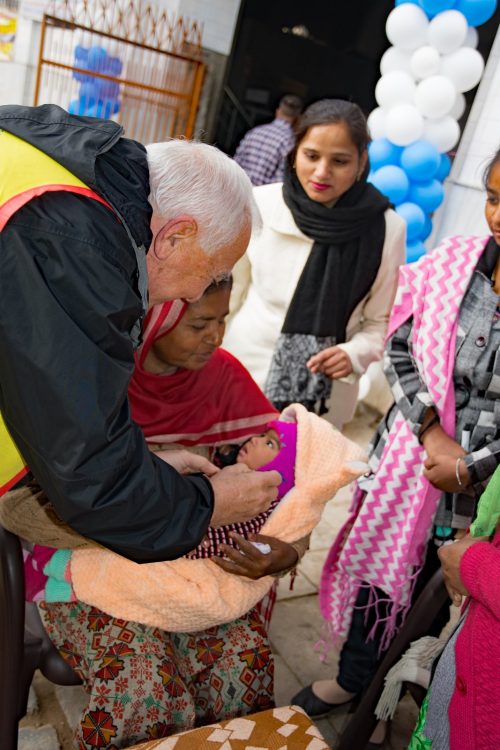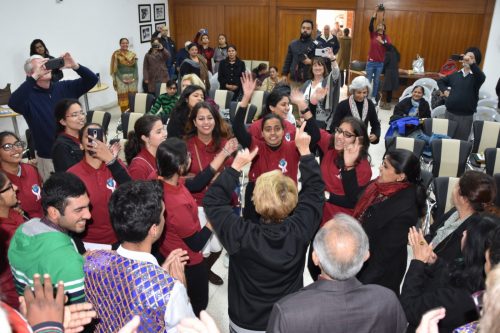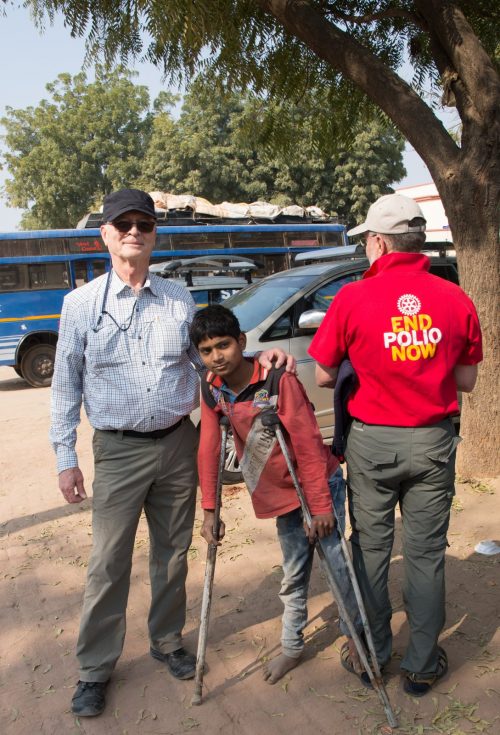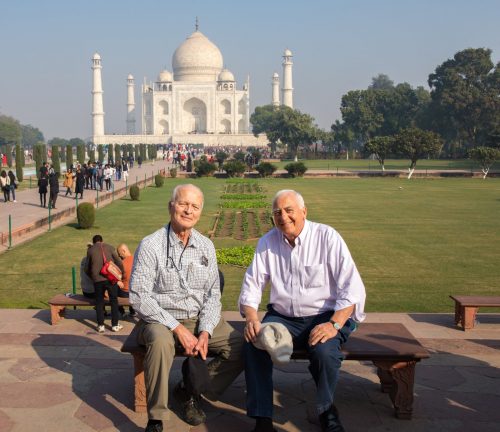Greensboro Rotary Members Travel to India for National Polio Immunization Day
by Ron Wilson, Contributor, and John Krege, Photographer
India’s National Immunization Days (NID) are held twice each year in an attempt to give polio vaccine to over 160 million children ages 5 and under. This massive task in a country of 1.2 Billion people requires the efforts of government health and social workers and thousands of volunteers, many of who are Rotarians from Rotary clubs across India and the world.

Each year Rotarians from Rotary Zone 33 travel to India to provide hands-on support and to represent the ongoing commitment of Rotary International’s Polio Plus program. This year (2018) the 24-member team included Rotarians from several districts and 9 states ranging from Connecticut to Key West, Florida. Two of the team members, Dr. John Krege and International Chair Ron Wilson, were from our own Greensboro Rotary Club and represented District 7690.
When Rotary got involved the world was paralyzed by fear of polio; 186 countries were experiencing 50,000 polio cases per year. Today, type 1 polio is active in only 3 countries (Pakistan, Afghanistan and Nigeria) but India’s close proximity to Pakistan and Afghanistan, with polio only one flight away, requires diligence and ongoing immunizations to protect Indian children from the crippling disease thus the annual efforts to see that each child gets their TWO DROPS of oral vaccine. (In the past live but attenuate virus was used and resulted in one in a million getting polio. Now, inactive poliovirus is used in the bivalent oral vaccine.)
Polio eradication is a journey. Though called a National Immunization Day, the effort actually takes several days to accomplish. On the first day stations are set up on village streets and parents, brothers and sisters bring their young to get the vaccine. After giving the two drops the workers mark the child’s pinkie with a purple marker. On the several days following, the workers go door to door to locate children. If a child’s pinkie finger shows no purple mark, the vaccine is given.

As simple as the process sounds, a lot of effort is required. The streets are shared with vehicles of every description: hand carts, bicycles, scooters, 3-wheeled “Tuk-Tuks” used for taxis and trucks and often cows and bulls that freely range.
While in India the team had the opportunity to meet with the World Health Organization (WHO) and UNICEF where we reviewed the journey that Rotary has taken in polio eradication. We also visited the South Asia office of Rotary International, attended meetings of Rotary Clubs in Jaipur and Chandigarh and toured those clubs humanitarian projects.
During their 4 days in Chandigarh, team members were privileged to be hosted by and live with members of the Chandigarh Rotary Club. Having spent days “seeing” this different culture, the opportunity to actually “live in it” with these generous Rotarians was indeed welcome.
Of course, no visit to India would be complete without seeing Old Delhi, the Taj Mahal, Gandhi’s last home and other tourist attractions and the team took time to see these sites prior to the NID.
While actually going to India for the NID is rewarding, not every Rotarian will have that chance. But what every Rotarian can do is support Polio Plus by making contributions to Rotary International’s PolioPlus Fund. Without the ongoing support of PolioPlus, we could see Polio’s spread.
Be a Rotarian, support PolioPlus and DO GOOD IN THE WORLD.


